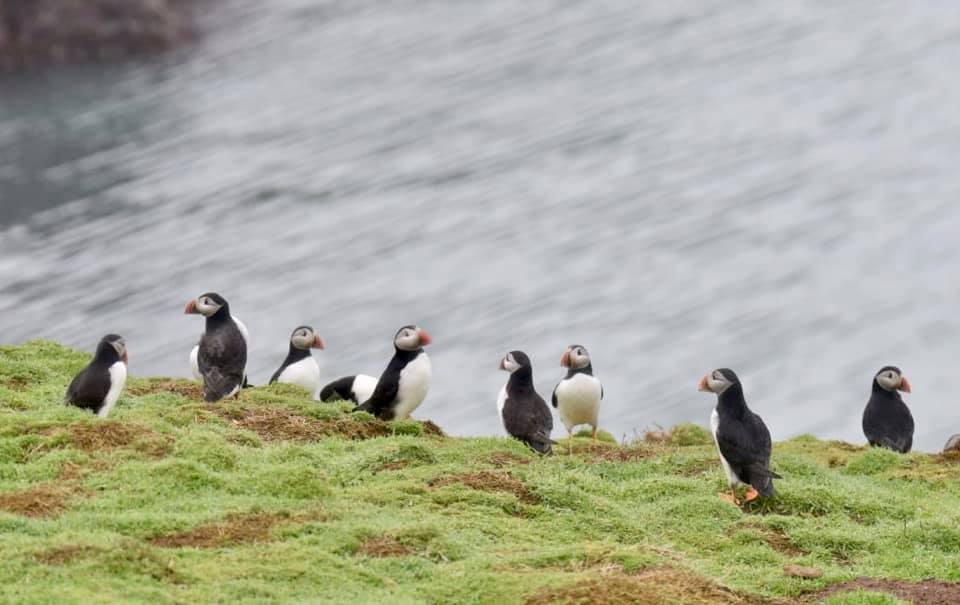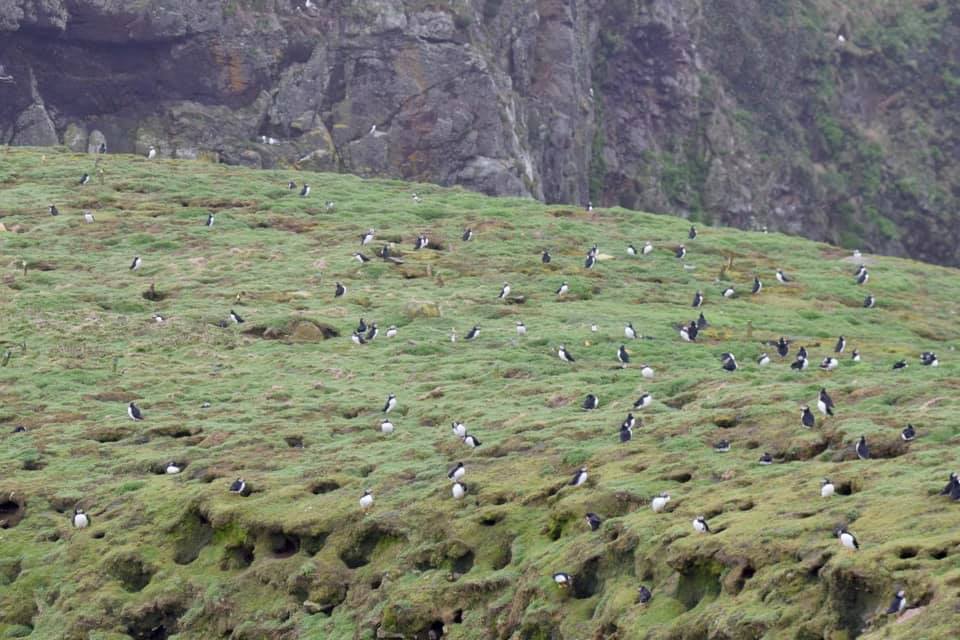IN THE LAST few days over 7,500 Puffins have arrived at Skokholm and over 5,000 on Skomer, the highest number in March since the 1950’s.
It is the earliest landing date for the birds since records began 90 years ago.
The Puffins were joined by other arrivals, including thousands of alcids.
The Skokholm Island Facebook page said: “The Puffins came in with a bang yesterday, so we walked the whole coastline and counted them.
“A mighty 7447 were rafting just below the cliffs; an amazing count and the highest March count ever!
“They also made first landfall-the earliest date they’ve dared to brave our shores in 90 years of recording.”
With Skomer island also confirming the early arrival of the birds on their Facebook page.
A spokesperson for The Wildlife Trust of South and West Wales (WTSWW) who manages the islands have confirmed that at last count yesterday (Tuesday, 19 March) there were “Over 7,500 at Skokholm and over 5,000 at Skomer”.
“This is the earliest they have landed in 90 years. In peak season we expect around 8,000 at a time so these numbers are proving very exciting for this years arrivals. The highest figures we’ve had over the islands is 30,000.”
Skokholm Island also said that it was the highest March count of the seabirds since the 1950s.


Did you know?
Puffin originally meant “fatling.” The name was used to describe the chubby chicks of the Manx Shearwater, with which puffin chicks were confused since they nest on some of the same islands in Europe that the puffins do. In the last half of the 1800’s the puffin was given the scientific name of Fratercula arctica, which means “little brother of the north” in Latin. Little brother may also be interpreted as ‘little friar’ an allusion to the puffin’s black and white plumage which is reminiscent of a friar’s robes. A second connotation of little friar may be drawn from the puffin’s sometime habit of holding it’s feet together when taking off, suggestive of hands clasped together in prayer. Regardless of the scientific name, local names still abound. These include such colorful names as “clown of the ocean” and “sea parrot.” People used to claim that a puffin was actually a cross between a bird and a fish because of its superb ability to swim underwater. This allowed some people to eat puffin meat on lent and Fridays to avoid the prohibition of meat by the Catholic Church on these days.
The scientific name for Puffin is Fratercula – is derived from Latin and means “little brother”, a reference to the black and white plumage, which resembles monastic robes.















